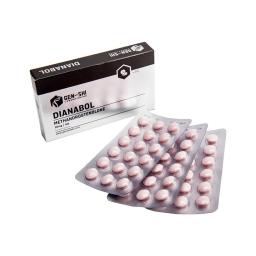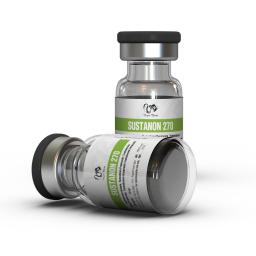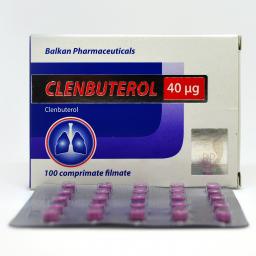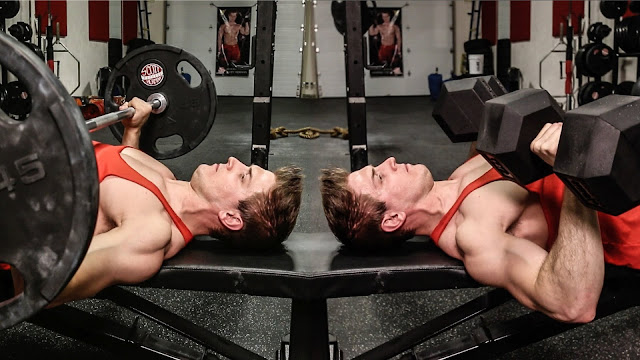Beginning a
bodybuilding career is a step toward a disciplined, structured and ultimately healthier lifestyle. There’s a lot to consider when embarking on this kind of journey, and make no mistake, a bodybuilding career is a journey. Most people start out joining a fitness club or gym randomly; maybe they’re looking to shed a few pounds or possibly they just want to get healthier, but during that process something happens, something clicks for them and they catch the bodybuilding bug.
They begin to notice changes in their physique, they’re becoming stronger, tighter, and they notice lean, sinewy muscle starting to develop in their legs, their
arms and their
chest. They’ve learned a few basic exercised and some simple understanding of the processes of the body, the processes that help them build muscle. It’s likely that they have little knowledge of proper nutrition and even less knowledge of supplementation; but the bug has caught them none-the-less.
Many people who catch that bug move on to longer, more
intense workouts, they copy some of the movements they see in magazines and generally fumble their way through, until time and experience either teach them the right way (sort of) or chase them screaming from the gym. Well here’s a way to make the transition from casual fitness club patron to beginner (and eventually intermediate) bodybuilder a little easier and more effective…create a training plan.
Creating a
training plan will help even the most knowledgeable bodybuilder focus their training according the goals they set out for themselves, whether short or long term. It will help to track progress, refine techniques, and identify problems; like the diet plan, the training plan is integral to the success of any bodybuilding career.
When creating a
training plan it is important to consider a few issues, not the least of which is setting realistic goals for your development; it’s important to consider your lifestyle, the type or size of gym you will have available (home gym or fitness club), your schedule (work or otherwise), and of course, where exactly you want this endeavor to lead you.
When setting your
goals, it’s easy to day dream about the physique of your favorite professional bodybuilder, imagining that your biceps and quads will be just as massive and defined as theirs in as little as a few months (because of course, your imagination can make anything happen). Though when you think in more realistic terms, you need to get a sense of not only where you want to be, but where you can be. As a general rule it is possible and not particularly difficult for the average person to achieve a gain of 20lbs of lean muscle mass within six months of intelligent and rigorous training. This number would vary greatly depending on several factors such as diet, the degree of dedication and energy put into each movement, and whether or not the individual is participating in regular cardiovascular exercise and/or trying to lose body fat at the same time. Many people will state that it is not possible to trim body fat and gain muscle at the same time, and generally this is true, though it may simply be that muscle mass gains will be reduced (greatly) in that case.
When setting goals for your training, it is good to understand that maintaining a higher body fat index during a
bulking phase (as compared to a cutting or fat burning phase) will aid in preventing injuries, and assist in the metabolism of protein or amino acids in the development of muscle. It’s also a good idea to not set your goals too high, while it might be possible to gain more than 30lbs of muscle mass in a relatively short period of time, it might be a wiser proposition to identify a target of 15-20lbs in the same period of time, to account for interruptions, diet conflicts and changing work schedules…setting your goal too high can set you up to fail before you start. For the beginning bodybuilder, set your weight gain goal between 10-15lbs in eight months, to allow for a period of adjustment and to ensure that you are correctly learning each movement without strain and the possibility of serious injury. The intermediate bodybuilder would do well to push their personal envelope (depending on their individual results and level of knowledge), to be gaining close to or more than 20-25lbs of lean muscle mass in approximately six months.
Now that you know, in specific terms, what you hope to gain from your bodybuilding experience, it’s time to consider the logistics of your training. Firstly, where will you workout? Have you set up a modest home gym in your basement or spare bedroom, or will you be attending a local
fitness club or
gym on a monthly membership?
While there may be a certain amount of convenience involved in training in the comfort of your own home, that situation can be and often is less than conducive to the goals you just set out. Laziness, distraction and a lack of assistance are some of the pit falls of training in a home gym. When you workout at home you will be more prone to allow distractions to enter your training time, kids, chores, TV, work and an entire gamut of things that should be left at the door; not to mention the likelihood that you will not have competent and knowledgeable spotters and guidance at home. The alternative would be paying for a monthly membership at a local gym or community fitness center (stay tuned for articles on selecting a good gym). The benefits of this might not be obvious at first; aside from providing trained staff to assist with spotting, advice on various movements and exercises and even nutritional advice; most gyms offer towel services, have a large array of equipment (which you would likely not have access to at home) and personal assessment services. If you are serious about your bodybuilding career, you will likely gravitate toward the social environment of a public gym rather than the secluded privacy of your basement anyway.
Next you should be indentifying when you will work out; there are several schools of thought concerning the best time of day for cardiovascular exercise and resistance training, though likely your work schedule will dictate and restrict your options in this regard, at least at first. Generally it is best to perform any cardio exercises first thing in the morning, either before your first meal or shortly after, restricting yourself to a maximum of 40 minutes, but no less than 20. Many bodybuilders will tell you that, unless you are trying to cut your physique for a show or event (trim body fat) you can eliminate deliberate cardiovascular exercise from your training plan, as it tends to waste precious energy and even protein from your system, while rigorous resistance training can provide ample
cardio stimulation, incidentally, through your regular workouts. Transversely, it is generally thought to be best to schedule your resistance training for mid to late afternoon (or early evening if your work schedule won’t accommodate afternoon); this is so that your diet can adequately provide enough energy and protein throughout the day to accommodate a strenuous workout later.
Equally as important as determining what time you will workout each day, is knowing which days to workout on and which days to rest. A typical
training plan will outline a four on, one off schedule, with the intention to target one major muscle group each day. There are many variations of training schedules; from three on, two off, to five on, one off. Mainly these variations are the result of personal preference, but there is some credence to each one. Some beginners may not recognize the importance of rest in their training program, opting to workout every day without a day off, eventually burning themselves out. At the very least every training plan should allow for one day of rest in five days of training, though some would say it is more advantageous to incorporate two days off in five. Rest could possibly be the single most important element of any bodybuilding plan, more so even than protein intake…as Arnold Schwarzenegger was once quoted;
“if you don’t have to stand, sit; if you don’t have to sit, lie; if you don’t have to be awake, sleep”. Bodybuilders today would do well to adapt that thinking to their training plan and allow for adequate resting time, both between workouts, throughout their weekly schedule and in their daily routine.
As a part of your
training plan, it’s a good idea to create a log book; in this log you should be recording your meals, both planned and unplanned and your workouts. Take your log book into the gym with you and record the number of sets and reps (repetitions) for each exercise as well as the weight you lifted for each set. Over time this will become an invaluable tool for tracking your progress and identifying areas where your development isn’t progressing the way you want.
Compile a list in your log book, of various movements and exercises that you want to use in your training. Consult your local library, book store or news stand for books and magazines that list and provide illustrations of the many hundreds of various movements that can be utilized. When selecting exercises, be sure to stick with core movements, i.e. exercises that involve one of the four major muscle groups of the body. Those groups should be as follows: arms, legs, chest/shoulders and back; within these four groups are sub groups, i.e. biceps and triceps, pectorals and deltoids, quads, hamstrings and calves, and latissimus major, minor and erectors. Also within these groups are further separations and smaller groups of muscles. Many bodybuilders treat pectorals and deltoids as separate major muscle groups and for the intermediate bodybuilder this might be a more effective approach, though for the beginner it is fine to think of them as the same group.
Be sure to select at least three exercises per muscle group, making sure they are basic and simple movements, i.e. flat bench press for chest, bicep curls and
pushdowns for arms, and leg press or squats for quads. Once you become more familiar with the basic movements you can add in more elaborate or isometric exercises to target muscle groups in different ways.
Once you have determined the extent of you training plan, consult your diet plan to make certain you have accounted for the correct caloric intake and have allowed for enough protein to meet your goals. Be sure you’ve allowed for your meals to be timed according to your training schedule, leaving at least 30 minutes between your pre-workout meal and the beginning of your daily workout.
Finally, now that you’ve written out your
goals, determined the
exercises you want to use and matched your
training plan to your
diet, review your plan to be sure it isn’t too inflexible. As with your diet plan, being too strict with your training regime and failing to allow for life’s little inconveniences and surprises, will set you up to struggle and in the end walk away having done nothing but frustrate yourself and gain only a distaste for exercise. Always try to recognize your will power weaknesses and accommodate them in your plan, and whenever possible, incorporate as much fun as possible; making it fun will make you want to participate more and ultimately increase your potential to gain muscle.
Have fun, stay safe and lift heavy…happy training!
buy steroids kuwait














